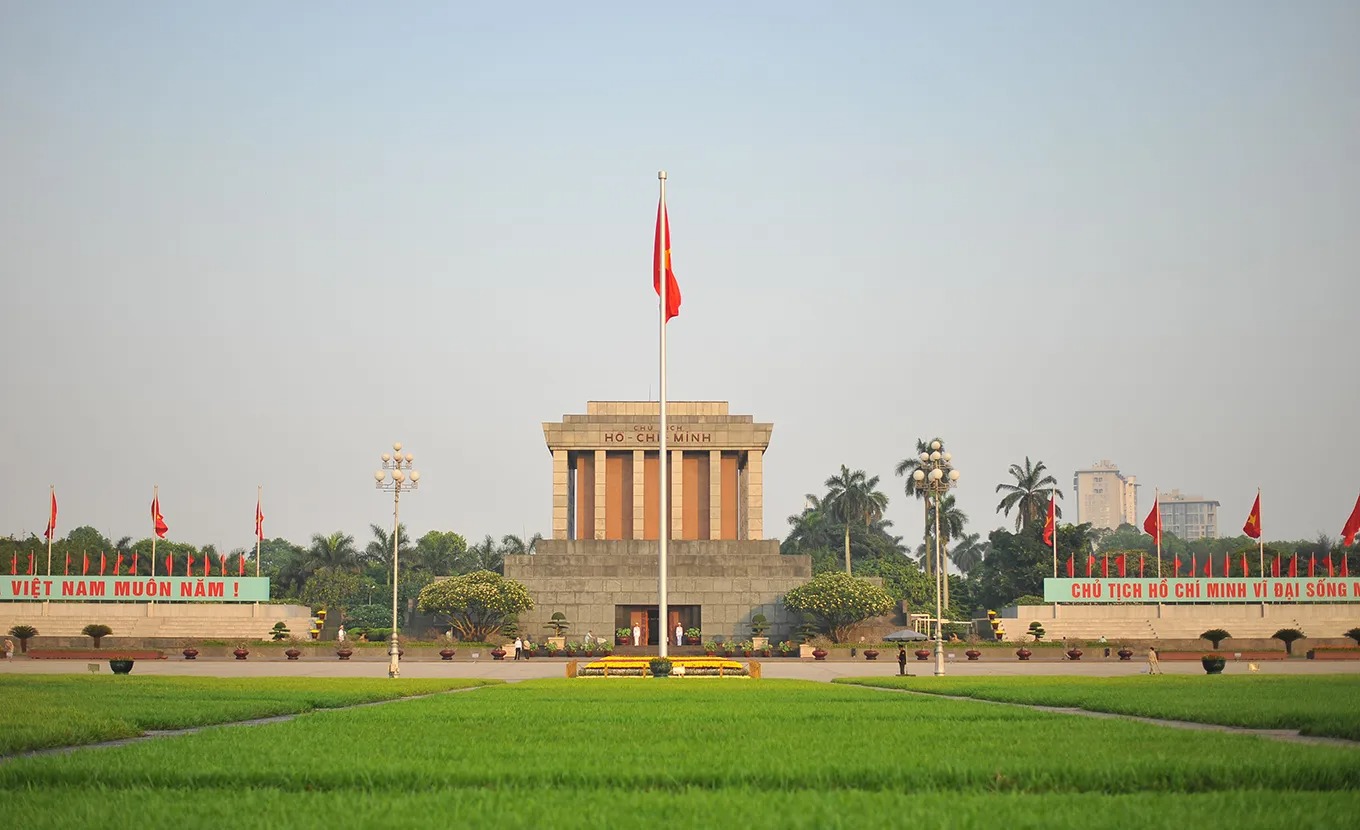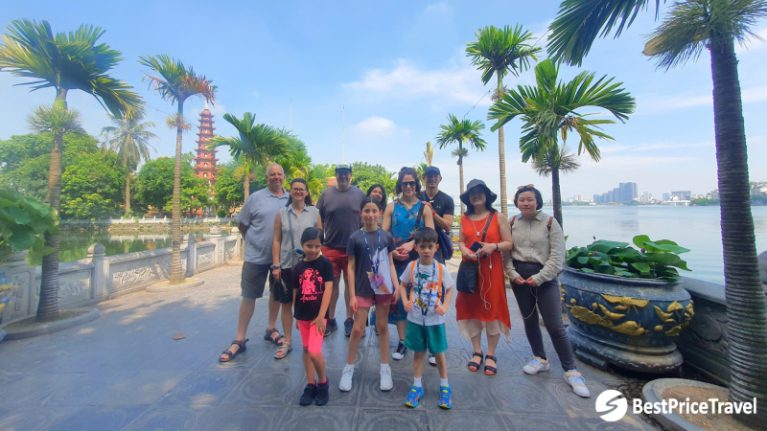Hanoi, capital of Vietnam, is well-known for its rich culture. Therefore, there are lots of tourist destinations for visitors to explore. In this article, ICA Travel Group will introduce you some places to visit in Hanoi. We hope that you will have an amazing experience in Hanoi and know more this beautiful city.
Place 01 to visit in Hanoi: Ho Chi Minh Mausoleum

There are abundant places to visit in Hanoi. However, the first place we would like to introduce is Ho Chi Minh Mausoleum. By visiting this place, visitors can delve deeper into the life of Ho Chi Minh. Paying respects at the Ho Chi Minh Mausoleum is considered a prestigious privilege, explaining the enduring commitment of many citizens.
In accordance with President Ho Chi Minh’s will, his desire is to be cremated and interred in different regions of Vietnam. However, by the will of the Party and the people, governments preserved his body and placed it in the Mausoleum. Nowadays, it’s a site for commemoration and visitation.
The Ho Chi Minh Mausoleum holds immense significance, reflecting the deep reverence and admiration the Vietnamese have for their leader. Today, it stands as a cultural and historical symbol of Hanoi, attracting a large number of tourists to visit. Since its inauguration in 1975, numerous generations of Vietnamese people and millions of foreign visitors have come to this place.
Place 02 to visit in Hanoi: One Pillar Pagoda
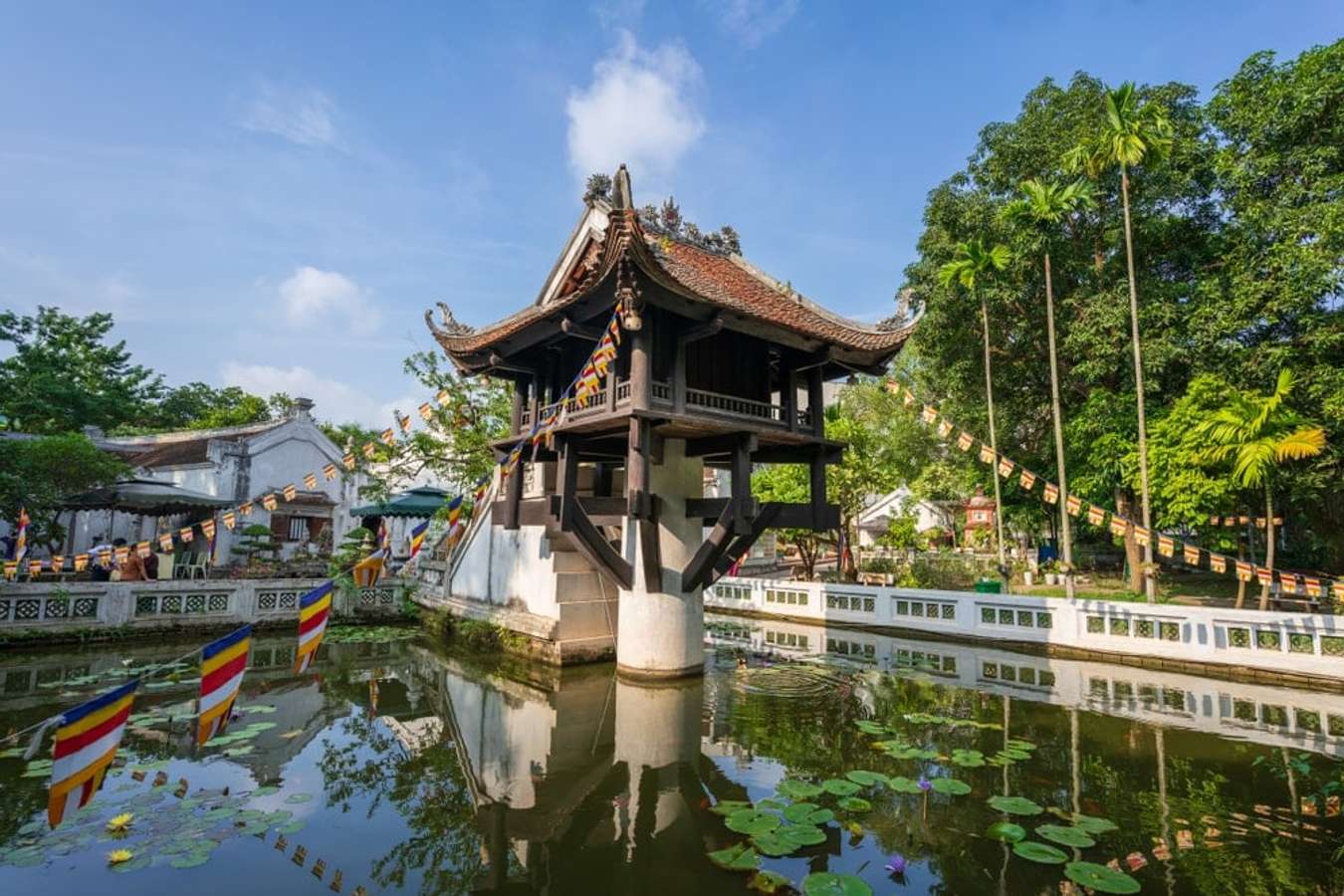
After visiting Ho Chi Minh Mausoleum, you can visit the nearby relics. One Pillar Pagoda is a suitable option.
The One Pillar Pagoda holds a significant place as a spiritual and cultural emblem of Hanoi. Its distinct architectural features and historical value make it an intriguing destination for tourists seeking an enriching experience.
During the war in 1954, the One Pillar Pagoda suffered damage from enemy bombings. However, it was meticulously restored by the government based on the original drawings from the Nguyen Dynasty. Since then, this pagoda has been continuously preserved and adorned, serving as a cultural, historical, and architectural heritage of Vietnam.
The One Pillar Pagoda stands as one of the top attractions in Hanoi, annually attracting both domestic and international visitors. Esteemed researchers have noted that this remarkable pagoda encapsulates significant traditional values cherished by the Vietnamese people.
Place 03 to visit in Hanoi: Ho Chi Minh’s House on stilts
A visit to Ho Chi Minh’s Stilt House offers a fascinating glimpse into the life of the President Ho Chi Minh. Affectionately known as Uncle Ho, President Ho Chi Minh played a pivotal role as a revered leader in Vietnam. Serving as an emblem of Hanoi, this residence was once the abode and workplace of the esteemed President of Vietnam. It helps to gain insight into the remarkable life of Ho Chi Minh and a glimpse into Vietnam’s heroic history.
Following the restoration of peace in Northern Vietnam, President Ho Chi Minh returned to Hanoi from the Viet Bac. He moved to the Presidential Palace in late December of the same year, where he resided until his passing. The Presidential Palace, encompassing a special national relic complex consisting of 16 buildings, includes the remarkable Uncle Ho’s Stilt House.
After Uncle Ho’s passing in 1969, the Vietnamese government made the decision to preserve the house for public visitation. Following Ho Chi Minh’s wishes, the house resembled the traditional houses of the minority ethnic groups in Viet Bac. It stands adjacent to the fish pond and a charming garden that held great significance for Uncle Ho. The collective setting creates a serene and refreshing atmosphere around the stilt house.
Place 04 to visit in Hanoi: Imperial Citadel of Thang Long
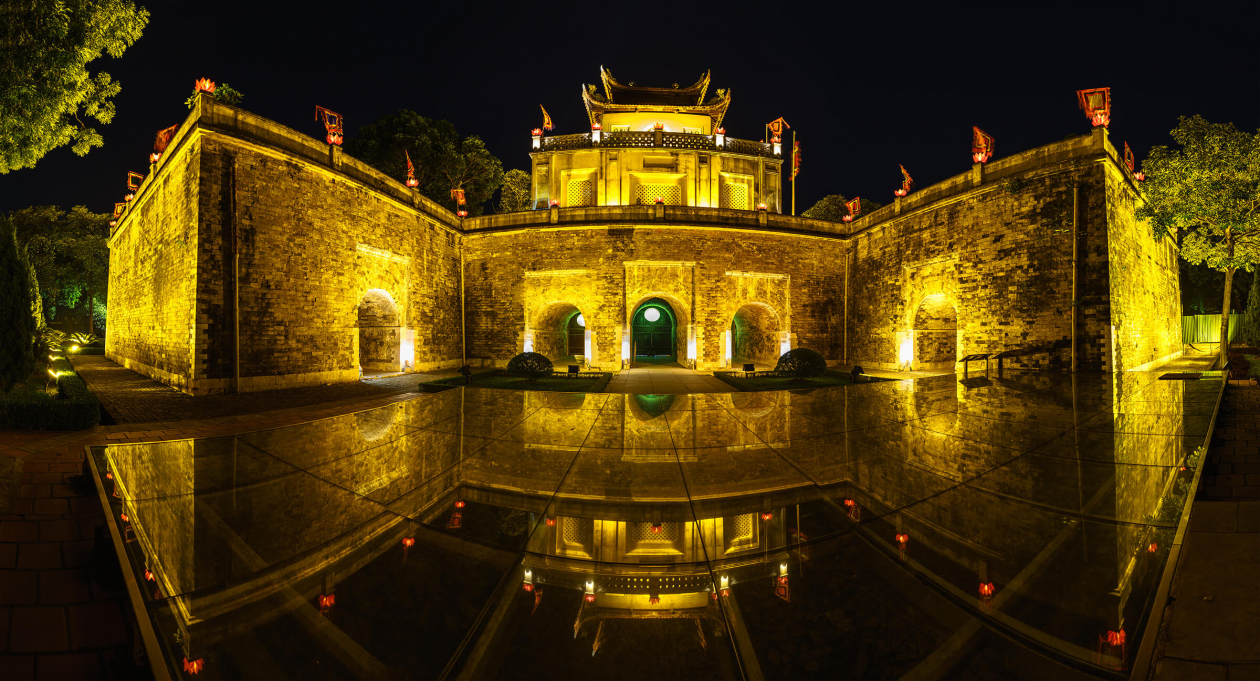
Place 05 to visit in Hanoi: Sword Lake

Hoan Kiem Lake holds a significant place in the historical narrative of Hanoi, having experienced various ups and downs. As one of the iconic symbols of the capital, it stands as an essential destination for visitors exploring the city. The true essence of the city’s ancient charm is most vividly showcased at Hoan Kiem Lake, making it a quintessential representation of Hanoi. Visitors can leisurely stroll around the lake, taking in the sights and venturing into the adjacent Old Quarter. It’s an opportunity to discover the aspects of Vietnamese architecture and lifestyle, and immerse oneself in the culture of Hanoi.
Of particular note, Hoan Kiem Lake is closely tied to Hanoi’s famous walking street. During weekend nights, this area transforms into a vibrant fair, offering various commodities and engaging activities. Apart from shopping, visitors can savor delectable dishes at nearby restaurants. A dedicated section of the street is allocated for traditional folk games, with everyone partaking in the fun. Along the lively street, buskers can be found singing and playing music, providing entertainment free of charge.
Place 06 to visit in Hanoi: Ngoc Son Temple
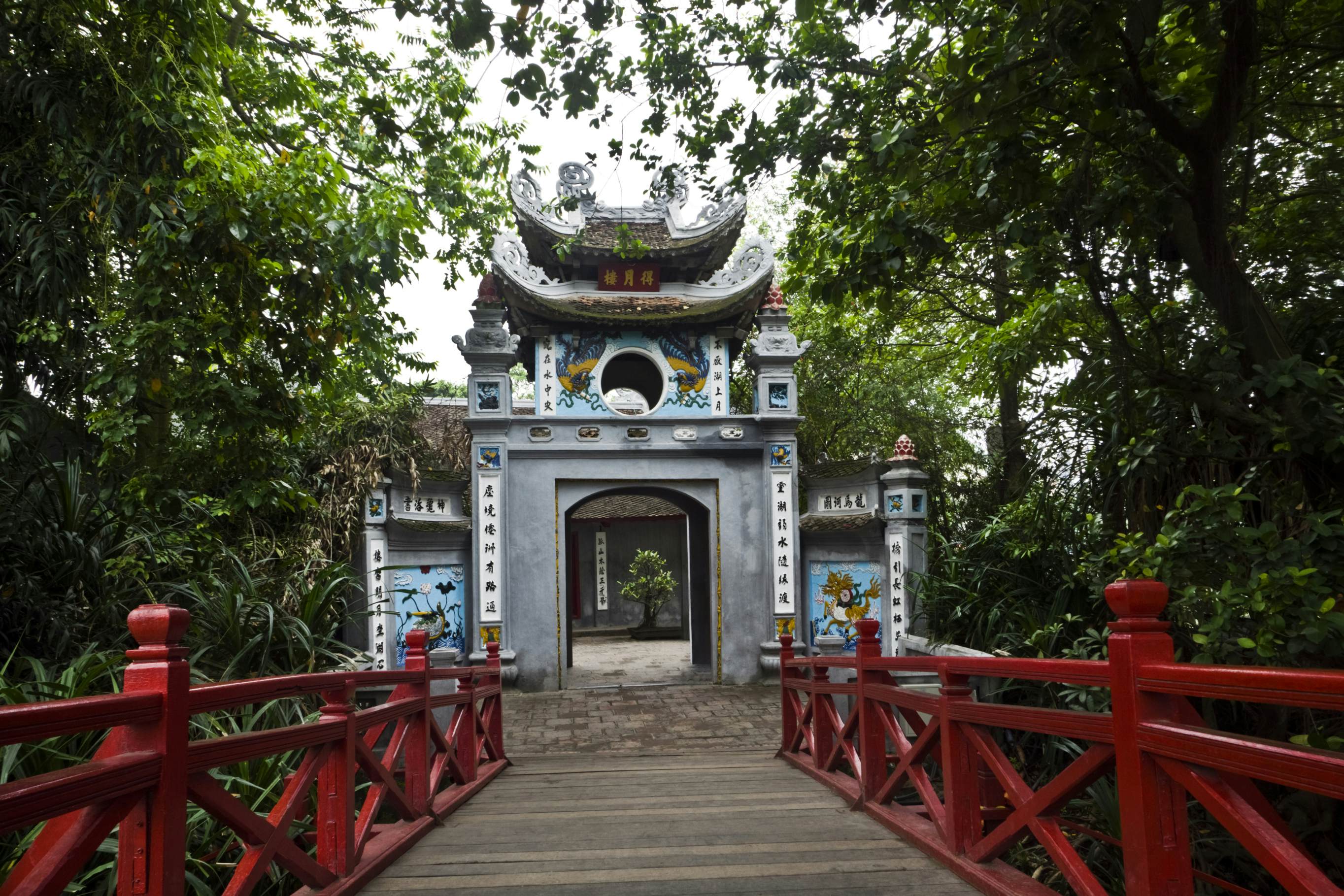
Ngoc Son Temple, a renowned landmark in Hanoi, showcases traditional architecture and embodies the spiritual essence of the Vietnamese people. It holds a sacred significance, attracting visitors who seek blessings and inner tranquility. Ngoc Son Temple is widely recognized as a prominent spiritual destination that is invariably included in any travel itinerary for Hanoi. Beyond reflecting the deep-rooted spiritual practices of the Vietnamese people during the feudal era, the temple also boasts distinctive architectural features and offers a captivating view of the famous Hoan Kiem Lake. Consequently, it attracts a constant influx of both locals and tourists who come to explore its beauty on a daily basis.
Place 07 to visit in Hanoi: Hanoi Old Quarter

Whenever tourists visit Hanoi, the Old Quarter is often their first destination of choice. The Old Quarter has garnered its reputation for its myriad attractions, diverse culinary delights, lively nightlife, and distinctive handicrafts. Within this bustling city center, one can discern the city’s ups and downs. Besides, visitors can make it an ideal location for immersing oneself in Hanoi’s culture and exploring its sights on foot. The phrases “36 streets of Hanoi” or “Hanoi Old Quarter” immediately spring to mind, as these streets witness to the capital’s history. The Old Quarter of Hanoi has transformed into an alluring tourist hotspot that visitors simply cannot overlook.
Place 08 to visit in Hanoi: Temple of Literature
Places to visit in Hanoi has more than these. Last but not least, we would invite you to the Temple of Literature, which stands as Vietnam’s inaugural university complex. Not only does it hold cultural and historical significance, but it also serves as a place where countless students seek blessings and good fortune for their upcoming exams and studies. As the country’s first university, the Temple of Literature is a prominent cultural and historical gem that features prominently in every Hanoi travel itinerary. A visit to this site will captivate you with its magnificence and tranquility, offering a deeper understanding of Vietnam’s early developmental history.
Emperor Ly Thanh Tong established the Temple of Literature in 1070 with the purpose of venerating the Chinese philosopher Confucius. It subsequently evolved into Vietnam’s first university, known as the Imperial Academy. For over 700 years, it remained open, nurturing numerous distinguished scholars and mandarins until the colonial period. Despite the adversities of war, the temple has managed to preserve its architectural splendor and cultural beauty.
In conclusion, ICA Travel Group gave you some places to visit in Hanoi. For detailed information, please contact us and ICA Travel Group are glad to offer you the best places to visit in Hanoi!



